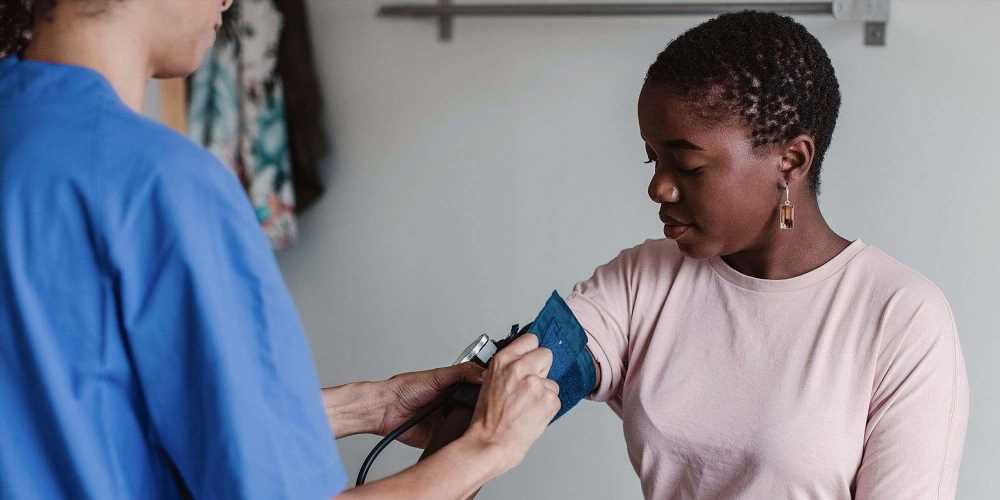Making doctors appointments may not seem like an insurmountable task, but how many of us found ourselves facing down the end of December with a year's worth of checkups to fit in? We suggest taking an hour of your time now to make all of your appointments, rather than trying to cram them in when your insurance is running out, time is running short, and your vacation and personal days are basically gone. It's a super simple way to make sure you're caring for your own well-being, and building that into your schedule all year long.
There are several benefits to pre-scheduling all of these appointments. First of all, you get your pick of dates and times when you plan ahead (no more, 'well, the dentist is only available at 2:30 on a Monday, and I have to take it because it's my last chance.'), Would you rather see zero doctors around your birthday? Fine, you have 11 other months to choose from!
Don't know where to start? ZocDoc is a great resource for booking and making appointments, so that you'll always know which physician you saw, and you can keep track of your records in one place.
As for exactly what appointments you need to make? We've got that all spelled out for you, below — plus an infographic you can keep as a handy reminder all year long.
The Basics:
One Annual Physical
A physical is a must, and the recommended frequency is right there in the name: annual. Every year. In sickness and in health. During this exam, the doctor will check your vitals, like your blood pressure, heart rate, and temperature, and will talk to you about your family's medical history. Depending on your health background and history your doctor might also do some blood work or further testing.
And while many millennials and Gen Zers are eschewing having regular primary physicians for urgent cares and whomever-is-available-near-me appointments, you might want to look into establishing a go-to doctor, if only for the sake of establishing your medical history — they'll be able to detect things easier if they know your previous results and have examined you before.
If you move around a lot or it's more affordable for you to use urgent cares or walk-in clinics, just be sure to have your medical records available for the physician to browse and talk through any health questions you might have, from your occasional migraines to your family's history of high blood pressure. GenieMD is a great app for digitizing your records, and lets you note things like previously prescribed meds or lab results.
One Gyno Exam
If you're over 21 or are sexually active (whichever comes first), you need to start seeing a gynecologist. A gynecological exam is on the docket yearly, according to most gynecological associations including the American College of Obstetricians and Gynecologists. During this exam, your doctor will check your breasts, do a pelvic exam (where they examine the walls of your vagina and cervix), and possibly do a pap smear (this is typically done every three to five years, depending on your age), where they'll swab to test for any cancerous cells or abnormalities. You might also have urine and blood taken to test for STIs, or even UTI or thrush (AKA yeast infections).
This is the time to talk to your doctor about any problems or questions you're having, including birth control, changes in your discharge, periods, and sex. Also, if you haven't gotten the HPV vaccine, you can talk to your doctor about getting it now. (New guidance has made the immunization available to people over the age of 26, so there's really no reason not to.)
Two Dental Cleanings (One Every Six Months)
It's important to get your teeth cleaned every six months, according to the American Dental Association. First of all, it's not just a cleaning — and they're not only there to scold you about flossing more often. Dentists are also checking for gum disease and will take X-rays to make sure there's nothing amiss, like tooth decay, impacted teeth, or tooth movement. Think of it this way: You only have one set of adult teeth. And you're going to be an adult for quite a number of years. What are two half-hour pit-stops a year to keep them intact, and inside your head?
One Skin Check/Dermatology Appointment
According to the American Cancer Society, you should be checking your own skin every month or so for new moles, freckles, patches, or unexpected changes. (And don't forget to check your toes and nails.) If you notice anything suspicious or new, or something old that has changed, you'll want to schedule a visit with your derm. That said, most skin cancers are highly treatable when caught early, so if you've never had a skin check with a dermatologist to establish a baseline, you're going to want to schedule one ASAP. They'll do a full-body scan and talk to you about your skin history, as well as tell you how often you should continue to get checked.
Annual skin exams may be recommended if you have a history of skin cancer in your family, a history of blistering sunburns or tanning bed use, a large number of moles or a history of atypical moles, or have a history of regular sun exposure, among other criteria. In other words, there's a good chance this should be on your yearly list of appointments.
One Vision Exam
If you wear contacts or glasses (or expect that you need to), you'll definitely need to see an eye doctor every year. But even if you don't, the American Optometric Association recommends getting an exam at least every two years to have your eyes checked for things like cataracts and glaucoma. After 40, you'll want to go closer to once every year.
Extras to Consider:
Additional Gynecological Exams
Beyond your annual exam, you'll want to head back to your gyno's office if you experience out-of-the-norm symptoms, like any pain during sex or in/around your reproductive organs at all, if you're considering family-planning, starting or getting off birth control, and so forth. If you are having sex with more than one partner, or generally need to re-up your STI testing, this is also a reason to return.
The CDC recommends getting an STI test for many of the common sexually transmitted infections (gonorrhea, chlamydia, syphilis) at least once a year, but many experts recommend every six months if you're seeing more than one partner or have had unprotected sex.
Of course, you don't have to get an STI test at your gynecologist's office — if you're just getting that done, there are plenty of walk-in clinics (including many urgent cares) that provide that service, which you'll want to check out if your insurance isn't the best or money is low. But it is nice for your gyno to have a complete history of your sexual health, and it helps to continue that relationship. It just depends on what you feel comfortable with.
One Mammogram
Mammograms should start yearly in your 40s, according to the American Cancer Society. Younger than that? Your doctor might recommend one if you have a strong family history of breast cancer. Talk to your doctor (during your yearly physical!) to see what they recommend. It's also normal for a gynecologist to do a breast check, and if they feel anything suspicious, they may recommend mammography as a follow-up.
A Therapy Check-in
In case you still need the reminder, mental health is a crucial part of your well-being. One of the biggest myth about therapy is that once you start, you have to go forever. On the other side of the coin, some people feel that they need to attend therapy to "fix" a specific issue. Neither is exactly the case. In a first consultation, you will talk through your major stressors, which will help you and your therapist identify any goals, and start treatment if necessary. This can mean a one-off check-in or setting up weekly sessions for continued work. You might also realize that therapy is not for you. Better to come to that conclusion with a therapist, or land on a treatment plan, before you get to a point where you feel like you have nowhere to turn. Think of it like a mental health check-up.
Source: Read Full Article






